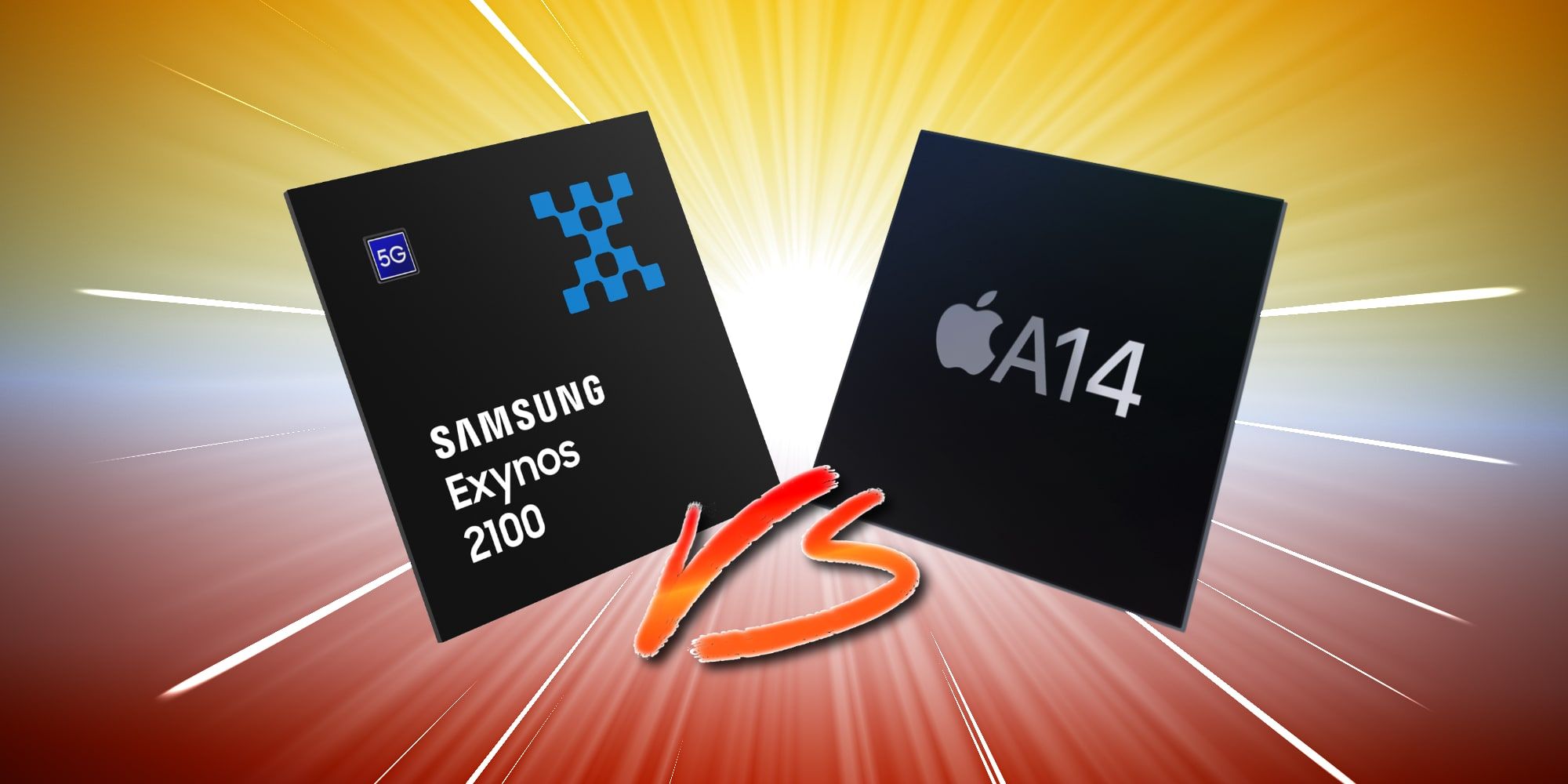Samsung recently announced its Exynos 2100 chip and the advanced 5-nanometer manufacturing process provides similar speed and efficiency advantages that Apple's A14 benefits from. There is much more involved in making a fast and powerful processor than the manufacturing node, though. A check of the components of these two systems-on-a-chip (SoC) designs will help to make a good comparison between Samsung and Apple’s latest and best mobile chips.
Samsung recently announced its Galaxy S21 line, a powerful collection of three smartphones that feature either the Qualcomm Snapdragon 888 or the Exynos 2100. The U.S. market gets the Snapdragon and international versions get Samsung’s own SoC. Over the last few years, Qualcomm’s SoC has outperformed Samsung’s by a significant margin, leading many outside the U.S. to ask for the Snapdragon-powered version, but that hasn’t come to pass. This year brings good news, however, as the Exynos 2100 provides big performance gains over the previous generation.
The Samsung Exynos 2100 is much faster than the Exynos 990 that powered last year’s flagships, the Galaxy S20 and Note 20. This new Samsung processor features a core layout quite similar to that of Qualcomm’s Snapdragon 888, with one ARM Cortex X1 high-performance core, three A78 performance-cores, and four efficiency-focused Cortex-A55 cores. This combination results in an up to 33-percent improvement in multi-core performance, compared to the previous generation Exynos. Image processing is better, graphics power is greater, and the neural engine can reach an amazing 26-tera-operations-per-second (TOPS). This new SoC is very much the equal of Qualcomm’s latest, based on what Samsung has reported. Meanwhile, Apple has maintained a lead over all other mobile chips for years, so how does its six-core ARM architecture A14 Bionic processor compete with the new eight-core Exynos 2100 SoC from Samsung?
A14 Bionic Vs. Exynos 2100: CPU & More
In a pure CPU benchmark test, Apple’s A14 Bionic is still the fastest mobile SoC around. It wins in both single-core and multi-core tests, even though it has fewer cores. A Geekbench benchmark shows a massive 45-percent faster single-core performance and a small edge (8-percent) in multi-core. This doesn’t mean that the Exynos 2100 is slow. As mentioned, it is much faster than the previous generation and will feel quite snappy in normal use. CPU speed is not the only measure of performance either. It is simply the quickest and easiest to measure and compare.
Full benchmarks are not available, since an Exynos 2100-powered phone has not been officially released yet, and graphics tests from pre-release units have not surfaced. However, it is clear that the Exynos 2100 GPU is quite powerful, as it can handle four simultaneous video streams at 4K resolution and can encode 8K video at 60 frames-per-second. In contrast, Apple makes no such claim. Likewise, the neural processor laps the A14, churning through 26 TOPS, while Apple’s best is 11 TOPS.
The bottom line is that both are very, very fast and advanced chips, so the strengths and weaknesses will be a trade-off. Apple won’t win every contest and neither will Samsung. A positive here is that all mobile SoC devices will benefit from more processing power in the coming year, advancing the possibilities of what can be expected from smartphone technology. The Exynos 2100 restores Samsung to a competitive position, challenging Apple' A14 Bionic and other mobile chips, and continuing to keep pushing the industry towards faster and more capable designs.


